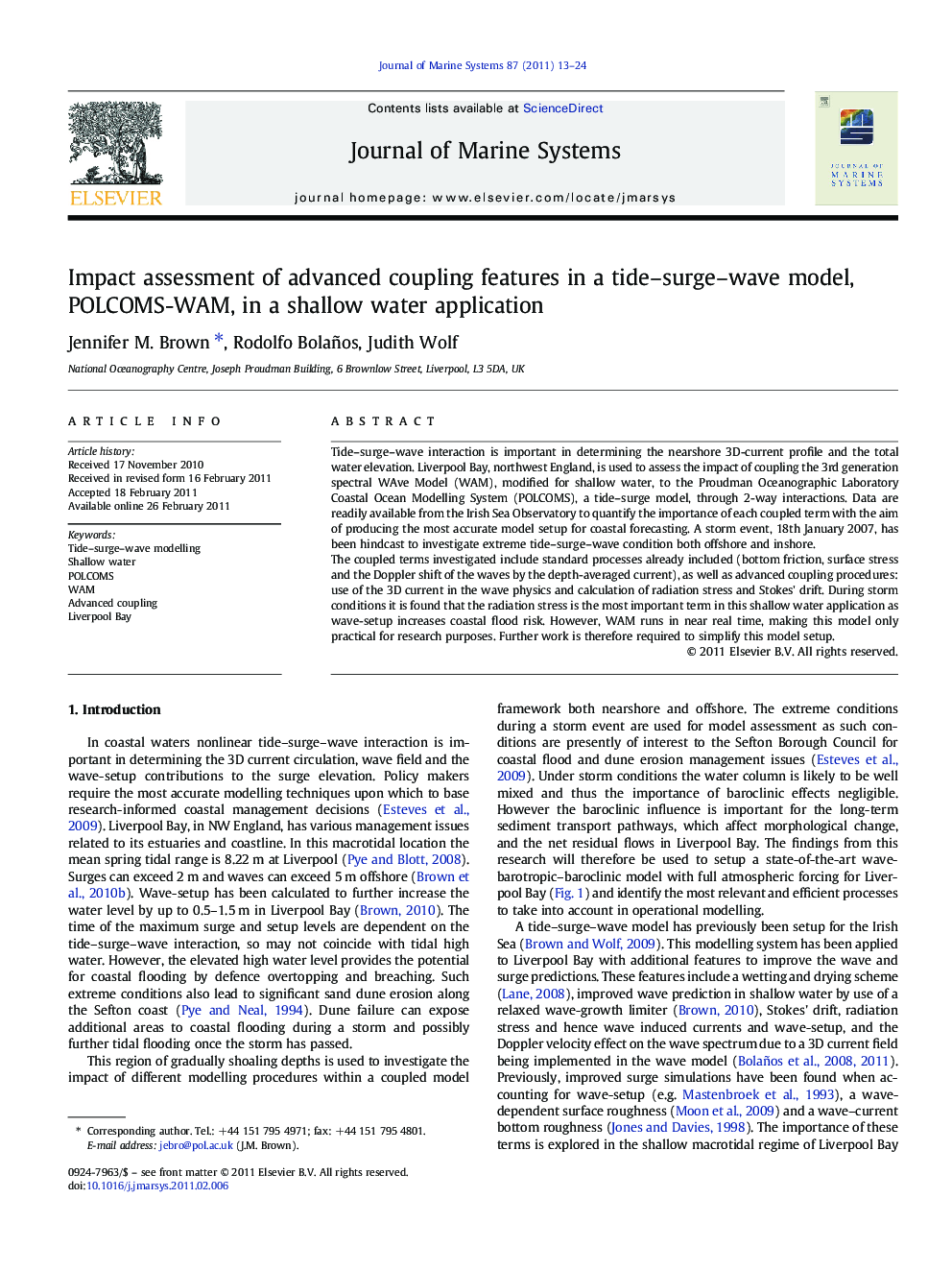| Article ID | Journal | Published Year | Pages | File Type |
|---|---|---|---|---|
| 4548357 | Journal of Marine Systems | 2011 | 12 Pages |
Tide–surge–wave interaction is important in determining the nearshore 3D-current profile and the total water elevation. Liverpool Bay, northwest England, is used to assess the impact of coupling the 3rd generation spectral WAve Model (WAM), modified for shallow water, to the Proudman Oceanographic Laboratory Coastal Ocean Modelling System (POLCOMS), a tide–surge model, through 2-way interactions. Data are readily available from the Irish Sea Observatory to quantify the importance of each coupled term with the aim of producing the most accurate model setup for coastal forecasting. A storm event, 18th January 2007, has been hindcast to investigate extreme tide–surge–wave condition both offshore and inshore.The coupled terms investigated include standard processes already included (bottom friction, surface stress and the Doppler shift of the waves by the depth-averaged current), as well as advanced coupling procedures: use of the 3D current in the wave physics and calculation of radiation stress and Stokes' drift. During storm conditions it is found that the radiation stress is the most important term in this shallow water application as wave-setup increases coastal flood risk. However, WAM runs in near real time, making this model only practical for research purposes. Further work is therefore required to simplify this model setup.
Research highlights► Extreme storm event modeling, including intertidal regions. ► Application of a 3D shallow water tide -surge -wave model. ► Development of WAM to consider 3D currents. ► Inclusion of radiation stress and Stokes' drift in POLCOMS. ► Assessment of coupling procedures between the hydrodynamic and wave models.
